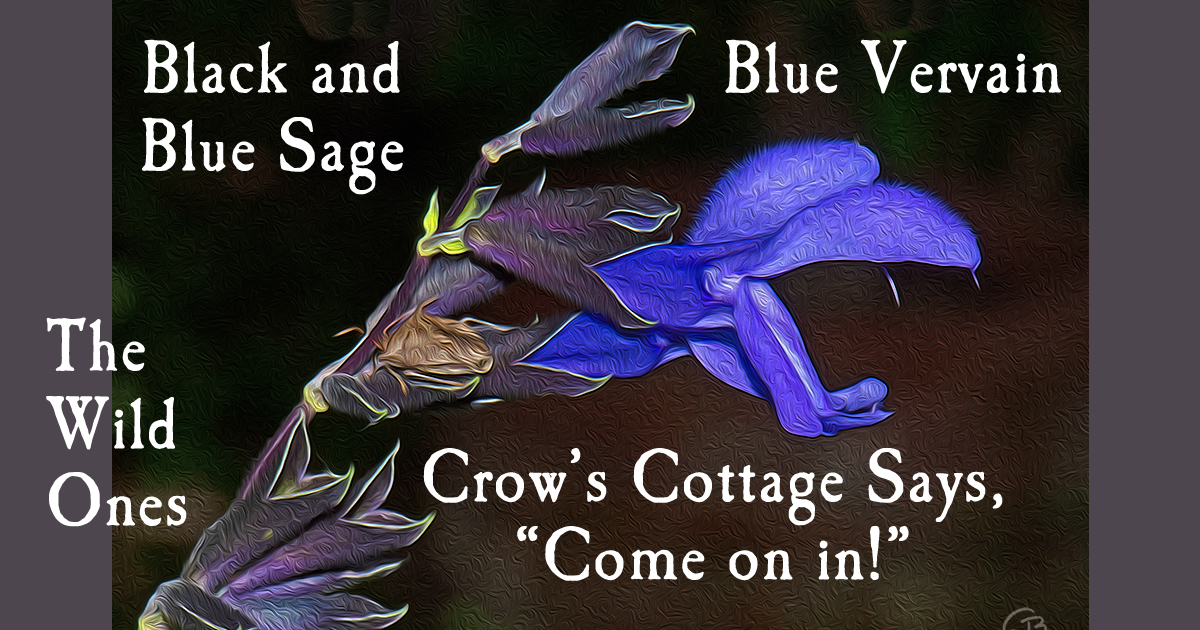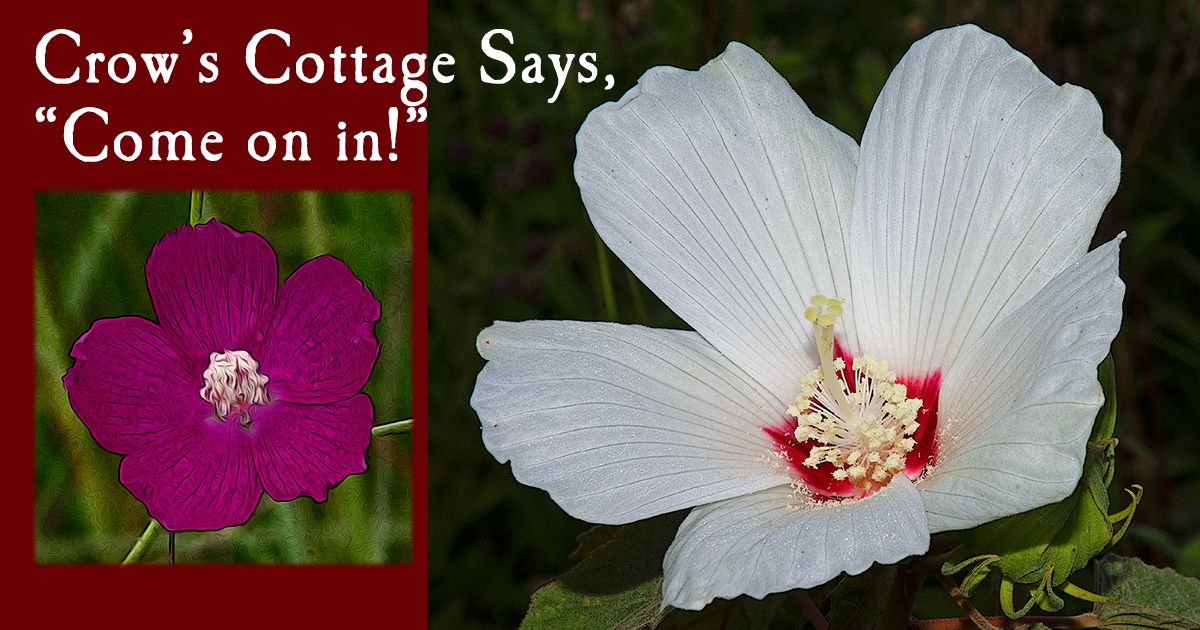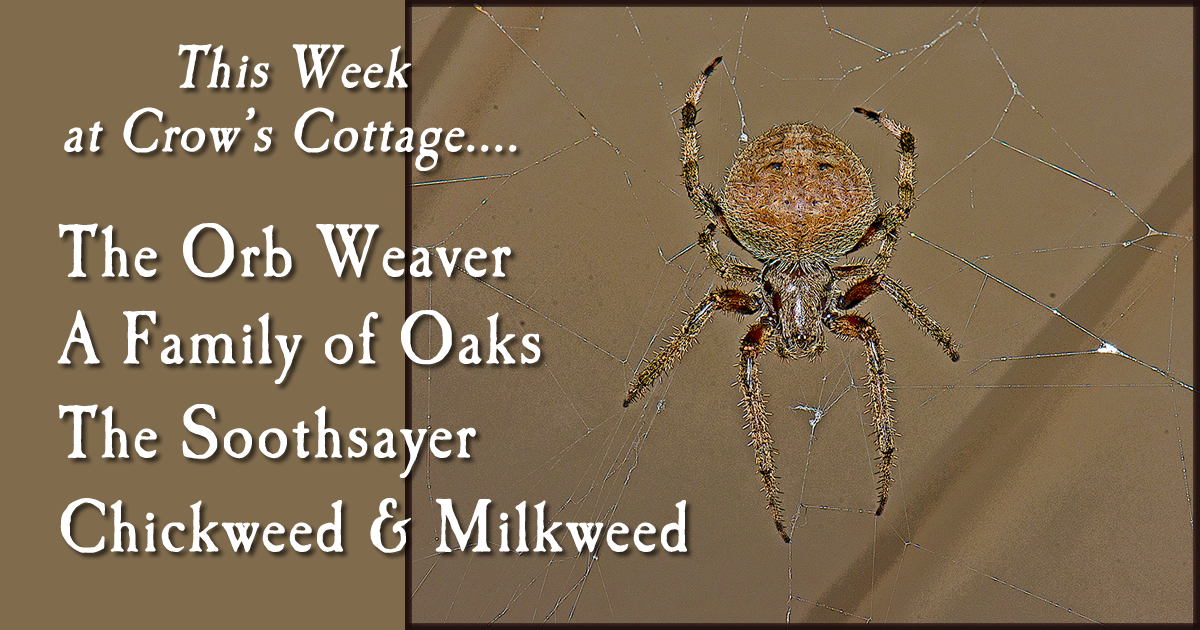


Box Turtle at 3 Dog Acres | rural Washington County, Arkansas | 16 April 2017
Snapping Turtle at Lake Fayetteville Environmental Study Center | Fayetteville, Arkansas | 30 March 2019
Stolid, Wise, Impassive and Serene
Wearing an expression carved out of an imagined prehistoric past, the Arkansas Snapper (Chelydra serpentina) evoked a sense of ancient reptilian wisdom that day (March 30, 2019) at the Science Center. He looked stolid and wise, impassive and serene. Though the snakes were the feature attraction at the Northwest Arkansas Master Naturalists training class, “Introduction to Arkansas Herpetology,” I was drawn to the turtle power. Unlike the kingsnakes, copperheads, and rattlers — who wriggled and wiggled and writhed … and looked very uncomfortable surrounded by a bale of humans — the snapper was becalmed and approachable, especially in the soothing hands of his keeper, the young daughter of master herpetologist Jeremy Sloan, who leads the Arkansas Herpetology Society — a snake charmer if I've ever met one.
The other turtle in our mini gallery is a common box turtle (Terrapene carolina), who comes 'round once or twice every spring to say hello and confirm our friendship. We appreciated her posing for the camera a few years back. Her strong foreleg and claws are especially impressive, as is her orange-rimmed eyeball. As for the pink substance under her neck, we surmised it was one of her favorite bowties, but upon further study we detect a flower petal. Can you guess the species? Try impatiens.
A Haven for Healing
She Ministers to the Turtles
By Ebenezer Baldwin Bowles
7 July 2020
A turtle in distress has a good chance of survival if it makes its way to the home of Joyce Hicks in Bella Vista, Arkansas. There she ministers to sick or injured turtles with the goal of returning them to the wild.
“I love 'em,” Joyce says of the turtles entrusted to her care. “Turtles are awesome. They remind me of prehistoric dinosaurs.”
One of the few Arkansas Game and Fish certified and licensed turtle rehabbers in the state, Joyce has transformed her home into a haven for the healing of box turtles, red-eared sliders, common snappers, and river cooters. “This year we've had a lot of dog attacks and lawn mower accidents,” she said. “So far since April I've gotten in 42 injured turtles.”
Disturbance to the Habitat
The turtles in northwest Arkansas face serious threats to their well-being because of a boom in the human population, which leads to the destruction of turtle habitat. “They're all being displaced because of all this growth in human activity,” Joyce said. “Builders of these new subdivisions are carving them out of farmland, and when they do, they fill-in the ponds. Turtles are losing their water sources and have trouble finding new places to eat and drink.”
The search for those “new places” sometimes means a turtle must cross a busy road. “We get them in quite often after they've been hit by cars,” Joyce said. “You'd be surprised at how tough a turtle can be. I always give them a fifty-fifty chance because you never know. I've had some with horrific injuries survive.”
Love, care, and attention to needy creatures comes natural to Joyce, who earned her stripes as a Texas Master Naturalist at the dawn of the Master Naturalist movement in the late 1990s. When she moved to Arkansas she reinforced her committment to the natural realm by becoming an Arkansas Master Naturalist in 2017.

Joyce's backyard is set-up as a healing habitat for recovering box turtles. “I monitor them, and when they're well and can hibernate, I release them back into the wild,” she said. Two friends provide appropriate release points, one in northwest Arkansas and the other in the backwoods near Berryville.
The Foolishness
Of the Human Species
Back in the day, turtles were sometimes captured by foolish youngsters and even more foolish adults, who carved their initials onto the shell.
“Turtles are frequently found with their initials and the date of their birth on their backs,” an anonymous author wrote in the October 9, 1882, edition of Harper's Young People: An Illustrated Weekly. “These initials and dates are not put on by the turtles themselves, and they are not very trustworthy. Any one who has a sharp knife and who catches a turtle can cut letters and figures on his back without hurting him. This is very often done, and the result is that a vast number of turtles ornamented in this way are now wandering about the country.”
Without hurting him? Think again. “It's horrible what people do,” Joyce said. “Turtles can feel through their shells. The shell has nerve endings. You can pet them. They like it, too.” Maybe they even wag their turtle tails behind them.
In the drift away from old ways, youngsters and irresponsible elders nowadays don't use pocketknives to decorate turtles. They use paint. “I got a call from one lady in Springdale about a box turtle walking down the side of the road in her neighborhood,” Joyce said. “The turtle was painted to look like a racecar.”
The Good Doctor France
Although Joyce does most of the rehab work, she sometimes calls on her veterinarian for assistance. Dr. Gary France at Pea Ridge Veterinary Clinic, she said, “is awesome. You can't imagine how important it is to have the right kind of vet. Dr. France really cares about the welfare of these turtles. If I need x-rays for one of my patients, I'll take it to him.” Dr. France also prescribes pain killers and antibiotics for turtles suffering from metabolic bone disease.

We asked Joyce if she has any pet turtles. Yes, she said: Duckie and Donald, a pair of box turtles. “They have severe metabolic bone disease,” she said. “A lady had them for about fifteen years. They didn't have proper light or nutrition, and their shells were just horrific. Now they're outside and they've hibernated. Their shells are better. They lived in a little four-by-four pen, but I've made a special habitat for them with plants they can use for cover. Now they have seventy-five square feet to explore. I just let them be turtles. They'll be in my care forever, which is fine.”
Pet turtles? Nothing new here, though we can't imagine a better turtle master than Joyce Hicks.
A Fanciful Look
At Turtles for Pets
“Turtles have for a long time been kept as pets by ladies in France,” our anonymous author wrote lightheartedly in Harper's Young People. “The turtle is a very inoffensive pet. He seldom keeps the neighbors awake by barking at night, or by singing on the back fence like ill-bred cats. All he requires to be comfortable is a few flies, and as there are a great many spare flies in all dwelling-houses, he catches as many as he cares to eat. Treated rationally, the turtle is a quiet and pleasant pet. He seldom shows any affection for his owner, but on the other hand he never bites like a vicious dog, or uses bad language like a depraved cat. Turtles live an immense length of time, and one turtle will last a person for a lifetime, especially if his shell is polished occasionally, and he is not allowed to eat wasps under the impression that they are a new and delicious style of fly.”
Joyce recently took possession of five more box turtles. “A lady had them for many, many years — since they were babies. She passed away and her family asked if I wanted them.” Well, yes! “They can't be released to the wild because they had lived with her for so long.” Now they can play with Duckie and Donald in a protected turtle wonderland.
“Just look at them,” Joyce said. “They have their own little personalities. And their eyes are so expressive.”
The Northwest Arkansas Turtle Rehabilitation Center
is located in Bella Vista.
Joyce's phone number is 972-571-8247.
You can reach her by e-mail at joyce3015@yahoo.com
or befriend the Rehabilitation Center on Facebook.


3 Dog Acres | rural Washington County, Arkansas
Image by Ebenezer | 15 June 2019 and 6 July 2020
My Dear Sweet William
O So Divine!
Right away we'll tell you: We've a weakness for hothouse annuals — in this instance, the Dianthus aka Sweet William aka Sops In Wine aka The Pink aka the Wild Carnation. She's lots of names because of her longevity as a highly favored decorative flower in English and German gardens. First mentioned in botanical writings late in the sixteenth century, Dianthus extends by inference to the most ancient of days. Our Messenger Crows tell us that the mighty God Jove, when a child, favored Dianthus as the decorative flower for his playground sward. That's how we interpret the message. The Crows seldom steer us onto the wrong path.
Mrs. Loudon reports that Sops In Wine “was for The Pink, in allusion to the flowers being sometimes put into wine, in order to give it a perfumed flavour.” If anyone should know these mysteries, it is Mrs. Jane, writing in her 1846 work British Wild Flowers. BTW, we forgot to tell you the Dianthus wafts a sweet perfume, thus its usefulness to a soured glass of wine. The Pink, Mrs. Jane proclaims, also grows on the “half-ruined walls of old castles in almost every part of England,” sinking their long fibrous roots deep into the aged mortar to produce flowers in July. It is July today. Wouldn't it be nice to enjoy a leisurely stroll 'round the walls of an old castle in The Isles? I'm game. Let's go!
That the old-style Dianthus bloomed in July — and not much longer — attracted the attention of ambitious, profit-minded botanists, who sought a subspecies that would blossom early and stay late, thus adding to the commercial value of this long-admired plant. And they did, these post-modern florists, discovering in the early 1970s a method to produce a Dianthus that didn't set seed, which (we are told) greatly lengthens the bloom-season — from early frost to late October. The fact that bees, birds, and butterflies are partial to the Dianthus is a bonus for annual gardeners. We've several Sops in Wine ablaze with glory at this very moment.
The bard Abraham Cowley (1618-1667) ranks among England's most popular poets of the seventeenth century — and what English poet worth his salt doesn't write about flowers? Mr. Cowley recognized the mighty Jove's youthful proclivity toward the Dianthus with these lines, published in 1662:
Sweet Williams small has form and aspect bright,
Like that sweet flower that yields great Jove delight;
Had he majestic bulk, he's now be styled
Jove's Flower; and, if my skill is not beguiled,
He was Jove's Flower when Jove was but a child.
Take him with many flowers in one conferr'd,
He's worthy Jove, e'en now he has a beard.
Before we go, please indulge one last aside: Abraham Cowley wrote in Latin. Imagine how limited in number were the readers of his works. Not many for sure. After Mr. Cowley's death, several admirers conspired to translate his Six Books of Plants into English — and they did so with a new book in 1689. Parts I and II concerned Herbs, III and IV Flowers, V and VI Trees. The poet's interest in politics rivaled his passion for plants, and they tell us his poetry overflowed with political symbolism. Aside done. Let's pause and smell the sweet summer wine.
![]()


Serenity and Peace
At the Botanical Gardens
Efforts to revive Picnic Point Park in Mumbai began this summer with the planting of native species, including the umbar (wild fig), jamun (plum), wild mango, and raat ki rani (the night-blooming jasmine). The park, once held in high esteem, has fallen into neglect in recent years. “This used to be Bombay’s favourite garden back then, and people who have grown up here have fond memories of it,” environmentalist Sanjiv Valsan told The Times of India. “Having been neglected and abandoned for long, it's gone into disrepair — the swings are broken, there is garbage lying around, plus there are anti-social elements coming in. People have forgotten that it exists. We now want to bring it back to life.” Anti-social elements be gone!
Botanical gardens across the USA are beginning to reopen in the Age of Covid. Three gardens have recently announced opening dates: The Tucson Botanical Gardens (Arizona) on July 9, the Waterfront Botanical Gardens in Louisville on weekends in July, and the Buffalo and Erie County Botanical Gardens on July 15. Prudent or reckless? We can't say, but the reasons for reopening are inspiring and optimistic — especially with protective measures in place.
“We want to be a place that is welcoming to everybody, where you can come and relax and enjoy nature, and enjoy that serenity and just be at peace,” Allison Whitehouse told WLKY TV of Louisville on 22 June. “Public gardens are indispensable to community healing, offering much-needed places for respite and connection with nature,” David Swarts told the Niagara-Wheatfield Tribune on 30 June. “I could never have imagined leading the Gardens through a time like this,” Michelle Conklin told The Tucson Weekly on July 3. “Nature has a way of healing and we are honored to re-open our Gardens as a place that provides healing, enjoyment, and inspiration.”



3 Dog Acres | rural Washington County, Arkansas
Images by Ebenezer | (from left) 2 July 2019 | 1 May 2019 | 20 September 2012
A Button, a Star, and the Pandora Sphinx
The Buttonbush (Cephalanthus occidentalis) is loaded with buttons right now … and the bumble bees love it. The blossoms emerged a week or so ago — right next to the yellow plastic tube designed for delivery of the Sunday edition of the Northwest Arkansas Democrat Gazette. All kinds of flying creatures rejoice because the tasty nectar of the Buttonbush is plentiful. The clusters of tiny Blue Stars (Amsonia tabernaemontana) came and went in a beautiful flash in late April early May. She's actually very small; each little Blue Star is not much bigger than a U.S.A. dime. As for the Pandora Sphinx moth (Eumorpha pandorus), this specimen is eight years long gone but remembered in Spirit through this image. The moth's body and the swept-back shape of his wings intimate a militaristic purpose, which makes us immediately guilty of anthropomorphism. Guilt be gone! The designers of the U.S.A. Air Force's B1 Stealth Bomber must have drawn upon ancient archetypes embodied in creatures like the Pandora Sphinx when they sat down at the drawing board, opened Pandora's Box, and invented a billion dollar flying machine of unspeakable horrors. You can't put it back in the box.

A Leafy Applause
At the Opera House
Two thousand two hundred and ninety-two plants — yes, they were counted — sat quietly through a performance of Puccini's Crisantemi by the UceLi String Quartet at the Gran Teatre del Liceu opera house in Barcelona, Spain, on 22 June. The concert, organized by conceptual artist Eugenio Ampudia, celebrated the end of Covid-19 lockdown measures. A video of the performance, The Guardian reports, “was edited to make the plants look like they were rustling their leaves in applause as the musicians took their bows.” The plants, donated by several nurseries, were presented to health care workers at the Hospital Clinic of Barcelona.


3 Dog Acres | rural Washington County, Arkansas
Images by Ebenezer | 7 August 2019 and 25 July 2019
Tropical Delight
With flowers as big as saucers and plants that yield dozens and dozens of blossoms from May through October, the Tropical Hibiscus (Hibiscus rosa-sinensis) ranks among the world's most popular decorative species — with the bonus that she's good medicine for a legion of ailments. She's exclusively a hothouse number: Wild populations of the China Rose have never been found — at least not lately. My studies — requiring much reading between the lines — indicate that this gem of a flower has been with us since the days of Ancient Rome, and that Marcus Antonius, Et Tu Brute, and the lovely Cleopatra drank mellow mugs of soothing hibiscus tea to relax after a long day of intrigue and machination.
In Florida, we've seen hibiscus plants rise to a height of nine or ten feet. Some say they grow as tall as fifteen feet. Not all Hibiscus flowers are red, either. Intentional cross-hybridization has created a wide palette of colors. The yellow beauty shown above is a cultivar of the rosa-sinensis, known in the nursery as the Bahama Mama — though we wonder if she might — instead — be the Peach Bellini or maybe the Pineapple Mule. Ah, the enigma! The roots of a delicious mystery it be, the kind of fascinating puzzle that adds a sense of joy and delight to amateur botany.












As always, we invite you to write us letter of encouragement or correction. You can even chastise us if you're respectful. Expect a courteous and timely reply. And let us know if you'd like to receive a notice about new features. Our address is ebenezer@crowscottage.com




